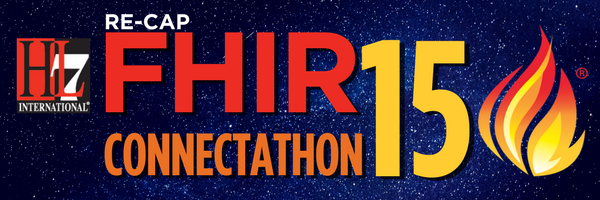
As is customary, the team held a FHIR® Connectathon preceding the HL7 International Conference & Working Group Meeting in Madrid earlier this month.
Connectathons are an integral part of the HL7 FHIR process as they help validate the decisions that are made as part of the overall development of the specification, and ensure the standard is as easy as possible to implement (recognizing that healthcare interoperability is always going to be complex).
HL7 FHIR Connectathon 15 had approximately 80 attendees – a bit down from previous connectathons, though still a strong turnout for an event held outside of the US.
This connecthaton featured 10 tracks, click here to read the complete list.
Following are some of the highlights:
Patient Track
The Patient Track is one of the oldest and it serves two main purposes:
1. It is an ‘introductory’ track for people new to FHIR. This track gives them reasonably straightforward tasks. Typically, attendees can easily build a client during the time alloted for the Connectathon.
2. The second purpose of the patient track is to ‘exercise’ the test scripts that will enable automated testing of both Servers and Clients. There are two organizations currently implementing test scripts – Aegis Touchstone and Mitre Crucible. Between these two organizations, nearly 200 systems have participated in testing since we started this initiative.
CDS Hooks
The CDS Hooks project seeks to standardize the manner in which an application can invoke external functionality – especially Clinical Decision Support. Four EHR vendors and eleven CDS service providers tested the CDC Opioid prescription guidelines where an EHR could launch a SMART application from a CDS Card during the event. This group is on track for a 1.0 release later this year.
FHIR Genomics
The FHIR Genomics participants exercised a number of resources they use (DiagnosticReport, Observation, FamilyHistory, Sequence, Specimen) over a number of areas – Sync for Genes, HLA typing for bone marrow donors and CareDx, and some work for NHS digital in the UK. They used the clinFHIR tool for resource visualization.
Clinical Reasoning
This group worked on a number of use cases, including Chemotherapy regimens to test out the PlanDefinition and RequestGroup resources, CIMI mapping to FHIR Logical Models (uploaded to Simplifier) and Opioid prescribing (in association with CDS Hooks).
Data Analytics
The Data Analytics track also had a dual focus. Using synthetic data generated by an open source tool called Synthea they used the clinFHIR tool to show relationships between resources for those new to FHIR. Participants also worked with Apache Drill as a different query mechanism for FHIR based data. They report that there is interest in connecting R with FHIR data.
Terminology
Participants in the terminology track continued to work on the operations defined by the Terminology services, especially $closure and, to a lesser extent, the ConceptMap resource. There were at least four terminology servers in use at the event, including both commercial and open source servers. This group also participated in the automated testing that is becoming a central theme of the event.
C-CDA on FHIR
This connectathon also featured a special participant in the form of C-CDA on FHIR, which was not a formal track. This group demonstrated the progress being made in converting between C-CDA and FHIR documents. Participants would take a C-CDA document and convert it to a FHIR document (using an XSLT transform) and back again to C-CDA. They then took the FHIR document, converted it to a batch update bundle and submitted it to the HAPI server, showing the created resources in clinFHIR. While not yet ready for production use, this inter-conversion between C-CDA and FHIR will be an important milestone, especially in the US.
You can read the complete reports by the track leads on the Connectathon wiki.
What's next?
So, all in all a highly successful event! We look forward to continuing the progress in San Diego in September.
See you there!


